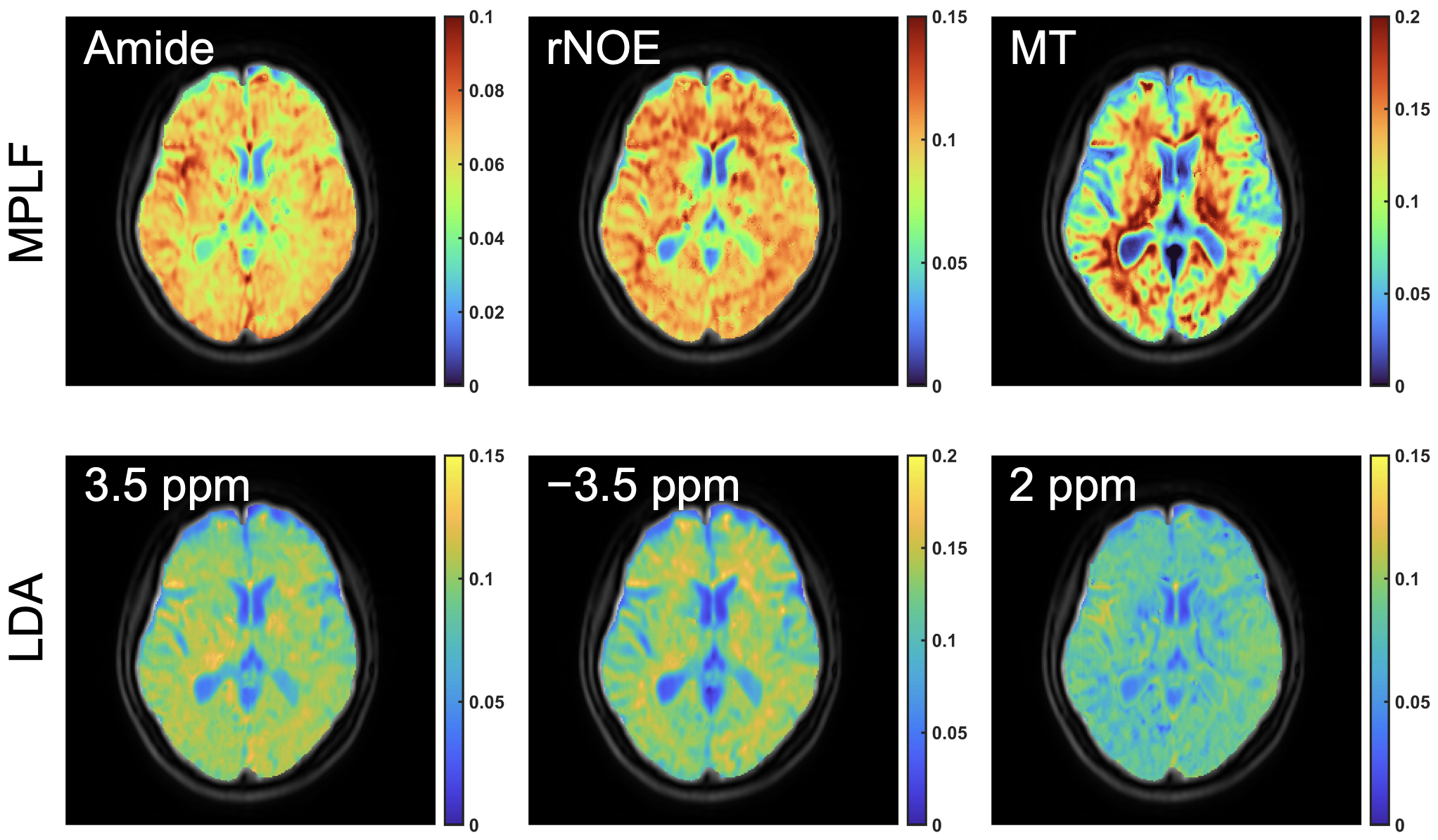Research
1. Chemical Exchange Saturation Transfer (CEST) MRI
Chemical exchange saturation transfer (CEST) magnetic resonance imaging (MRI) is an advanced molecular imaging technique that detects in vivo proteins and metabolites via exchangeable protons or features without the use of radioactive contrast agents. The CEST contrasts, such as amide proton transfer (APT), glucose, creatine, and relayed nuclear Overhauser effect (rNOE), have great potential for studying disease pathology. Previous studies have reported the application of CEST in detecting pathological changes in diseases such as brain tumors, stroke, Alzheimer’s disease and multiple sclerosis. Currently, amide proton transfer weighted (APTw) imaging is the only CEST method that has been used in routine clinical use, while other CEST methods are still in the “work in progress” (WIP) stage in the clinical setting. In our lab, we are interested in developing various CEST techniques for both acquisition and analysis. We also investigate the molecular imaging of diverse diseases, including Alzheimer’s disease (AD), multiple sclerosis (MS), stroke, and cancer, using CEST MRI.

2. Medical Image Analysis
Medical image analysis is a branch of medical imaging that involves the use of various computer algorithms and technologies to analyze medical images. Medical images provide valuable information for healthcare professionals to diagnose and treat various diseases. In our lab, we are interested in developing medical image analysis methods that involve medical image reconstruction and analysis. Our goal is to derive clearer details from images, such as the size and shape of organs, the presence of abnormalities, and the progression of diseases, for better disease diagnosis and treatment.

3. Artificial Intelligence in Radiology
Artificial Intelligence (AI) has emerged as a powerful tool in radiology, offering the potential to improve diagnostic accuracy, efficiency, and patient outcomes. AI algorithms can analyze large volumes of medical images and assist radiologists in identifying abnormalities and making more accurate diagnoses. AI can also help in predicting disease progression and treatment outcomes. Our lab is interested in exploring the use of AI in radiology and developing new AI-based technologies for medical imaging and clinical decision. We aim to leverage the latest advances in machine learning and computer vision to develop algorithms that can analyze various types of medical imaging data, especially MRI images. We will also explore the use of AI for predicting disease progression and treatment outcomes, and for developing personalized treatment plans for patients.

